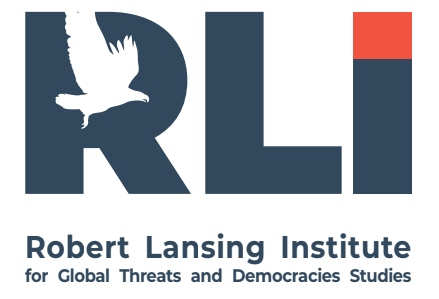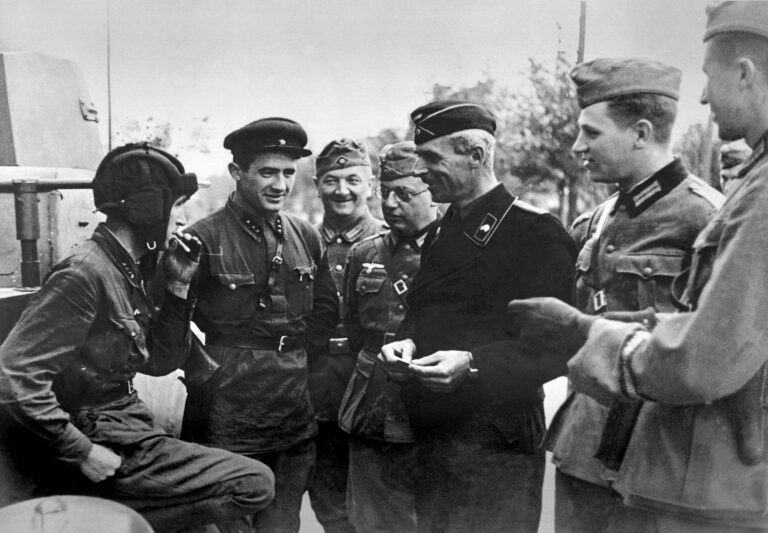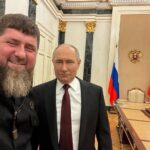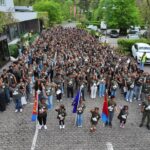Throughout modern history, authoritarian regimes have often manipulated historical memory and myth to justify their rule, consolidate power, and forge a collective identity. Nazi Germany’s Ahnenerbe and modern Russia’s Immortal Regiment, while seemingly disparate in origin and context, share striking functional and symbolic parallels. Both serve as state-endorsed tools of ideological control, drawing on ritual, symbolism, and a mythologized past to foster unity, obedience, and confrontation with perceived enemies. This paper explores these parallels and delves into the occultist undercurrents in Nazi Germany and contemporary Russia, revealing how both regimes use pseudo-history and mysticism to reinforce authoritarianism.
The Immortal Regiment is a Russian civil-military tradition where citizens march on May 9 (Victory Day) carrying portraits of relatives who fought in World War II. Originally a grassroots movement, it has been co-opted by the Kremlinas a tool of state-sponsored historical memory and nationalist propaganda — to sanctify the Soviet past, justify current military ventures (like Ukraine), and assert moral authority.
The Ahnenerbe was a pseudo-scientific institute in Nazi Germany, founded by Heinrich Himmler, dedicated to proving the racial superiority and mythical heritage of the Aryan race. It blended archaeology, anthropology, and occultism with Nazi propaganda goals. It was used to justify conquest, genocide, and cultural supremacy.
There are no direct links between Ahnenerbe and the Immortal Regiment, as they originate in radically different contexts — Nazi Germany vs. post-Soviet Russia — but there are symbolic and functional similarities worth analyzing. These similarities reveal how both served as tools of state ideology, identity construction, and myth-making. Here’s a breakdown:
1. State-Controlled Myth-Making
- Ahnenerbe: Promoted a mythologized version of German history to justify Nazi racial ideology, Aryan supremacy, and expansionism.
- Immortal Regiment: Originally a grassroots effort, it was co-opted by the Russian state to build a glorified narrative of WWII (the “Great Patriotic War”), reinforcing Russian nationalism and legitimacy of current leadership.
Similarity: Both reshape history into a sacred, untouchable narrative to serve state ideology and unify the population under nationalist banners.
2. Use of Ritual and Symbolism
- Ahnenerbe: Involved in SS rituals, ancestral veneration, and mythological symbolism rooted in Germanic paganism.
- Immortal Regiment: Uses annual processions, portraits of war dead, patriotic songs, and military symbolism to sanctify sacrifice and loyalty.
Similarity: Both rely on emotional, ritualistic, almost religious engagement with the past to create a sense of eternal continuity with ancestors or heroes.
3. Instrument of Political Legitimization
- Ahnenerbe: Used pseudo-history to legitimize Nazi ideology and policies (e.g., Lebensraum).
- Immortal Regiment: Reinforces the Putin regime’s claims to continuity with the Soviet victory in WWII, justifying current militarism and foreign policy.
Similarity: Both convert historical memory into political capital.
4. Anti-Western Narratives
- Ahnenerbe: Promoted the idea of Germanic superiority against “decadent” Western and Eastern societies.
- Immortal Regiment (as it evolved): Frames Russia as the eternal bulwark against Western aggression and moral decay, casting NATO and the U.S. as threats to the sacred memory of WWII.
Similarity: Both create antagonistic, us-versus-them worldviews tied to historical destiny.
5. Manipulation of History for Mass Mobilization
- Ahnenerbe: Fostered national unity and SS loyalty through a heroic reinterpretation of history.
- Immortal Regiment: Mobilizes millions through memory politics, reinforcing support for war (e.g., Ukraine) under the mantle of past glory.
Similarity: History is weaponized for identity and control.
I. The Origins and Functions of Ahnenerbe and the Immortal Regiment
- Ahnenerbe: Founded in 1935 by Heinrich Himmler, Ahnenerbe was an SS think tank dedicated to researching the supposed Aryan origins of the German people. It mixed archaeology, folklore, and occultism to create a mythological foundation for Nazi racial ideology.
- Immortal Regiment: Begun in 2012 as a grassroots initiative in Russia to honor WWII veterans, the Immortal Regiment was rapidly co-opted by the Kremlin. Today, it is a central part of Victory Day celebrations, mobilizing citizens to march with portraits of deceased relatives who fought in WWII.
II. Mythologized History as a Tool of Political Legitimacy
- Ahnenerbe turned history into a racial and mystical narrative to justify territorial expansion (Lebensraum) and Aryan supremacy. It aimed to portray the SS as spiritual descendants of ancient Nordic warriors.
- The Immortal Regiment has been reoriented from memorialization to myth-making. It presents WWII not just as a historical victory but as an eternal moral foundation for Russian exceptionalism and anti-Western sentiment.
III. Ritual, Symbolism, and the Sacralization of the State
- Nazi ceremonies involving Ahnenerbe research findings were steeped in esoteric symbolism. Rituals evoked pre-Christian paganism and SS mythology, reinforcing obedience through spiritual awe.
- Russian Victory Day parades and Immortal Regiment processions involve mass participation, military display, and emotive symbolism. These secular rituals take on a religious character, portraying the state as guardian of sacred memory and collective identity.
IV. Occultism and Esoteric Influence
- The Nazi elite, particularly Himmler, were deeply influenced by occult ideas. Ahnenerbe expeditions sought evidence of ancient Aryan civilizations in Tibet, the Arctic, and beyond. These efforts were not purely scientific but intended to prove mystical destiny.
- While modern Russia lacks explicit state-endorsed occultism, certain Kremlin ideologues and cultural influencers (e.g., Aleksandr Dugin) draw on mysticism, esoteric Eurasianism, and apocalyptic nationalism. Symbols, religious language, and the elevation of martyrdom echo a quasi-spiritual vision of Russian destiny.
V. Anti-Western Ideology and the Creation of the “Other”
- Ahnenerbe helped construct the idea of the “degenerate” West and “inferior” races, justifying war and genocide.
- The Immortal Regiment and broader Russian memory politics frame NATO and the U.S. as ideological successors to fascism, recasting WWII as an ongoing struggle between Russian virtue and Western aggression.
VI. Mass Mobilization and Authoritarian Stability
- Nazi Germany used Ahnenerbe’s pseudo-historical findings to indoctrinate the SS and the wider population, creating a self-righteous and mobilized society.
- Russia uses the Immortal Regiment to maintain popular loyalty, especially during wartime or economic hardship. Historical memory becomes a psychological and political shield against dissent.
Though Ahnenerbe and the Immortal Regiment emerged in distinct historical contexts, they share a core function: the manipulation of collective memory and myth to serve authoritarian ends. By cloaking political agendas in the sacred aura of history, both Nazi Germany and contemporary Russia elevate their regimes beyond critique, blur the lines between truth and fiction, and prepare their societies for confrontation. Understanding these mechanisms is essential not only for historical clarity but also for anticipating future authoritarian strategies of memory warfare.
- Investigate the role of Russian Orthodox symbolism in state rituals.
- Track the evolution of Duginist esoteric nationalism within Kremlin ideology.
- Compare modern Russian memory politics with Chinese, Turkish, and Iranian historical myth-making.
The Rise of Duginist Esoteric Nationalism in the Kremlin
Aleksandr Dugin, often dubbed “Putin’s Rasputin” in Western media, represents the intellectual bridge between classical fascist esotericism and modern Russian ultra-nationalist ideology. Drawing from a syncretic mix of Orthodox mysticism, Traditionalism (as influenced by Julius Evola), and Eurasianism, Dugin promotes a vision of Russia as the spiritual and geopolitical antithesis to the liberal West. His ideological framework has influenced segments of the Russian elite, military academies, and propagandist narratives.
- Philosophical Underpinnings: Dugin’s thought is rooted in the rejection of modernity, liberalism, and Western rationalism. He calls for a return to “sacred geography,” viewing Russia not merely as a state but as a metaphysical entity destined to unite Eurasian peoples under a hierarchical, spiritual civilization.
- Fourth Political Theory: His key theoretical contribution, the “Fourth Political Theory,” is presented as a successor to liberalism, communism, and fascism. While distancing itself from explicit fascist labeling, the theory embraces spiritual collectivism, authoritarianism, and the idea of historical destiny—echoing themes from Nazi occultism.
- Influence on Kremlin Narrative: While Dugin does not directly dictate policy, his worldview aligns with Kremlin ideological trends: confrontation with the West, the deification of the state, and the mythologization of Russian suffering and sacrifice. The Immortal Regiment fits naturally into this schema as a spiritualized reenactment of victory and martyrdom.
- Occult Echoes: Dugin’s invocations of “sacred war,” his interest in geomantic power centers, and his reverence for apocalyptic struggle mirror the esoteric undertones of Ahnenerbe ideology. Both systems interpret history as cyclical, heroic, and sacrificial, requiring a warrior elite to preserve cosmic order.
As Russia deepens its ideological confrontation with the West, Duginist esoteric nationalism provides both an internal mythos and a strategic cultural weapon. It is not merely rhetoric but a psychological blueprint for war, hierarchy, and eternal struggle—cloaked in Orthodox vestments and anti-Western mysticism.
The Kremlin’s use of Nazi-style practices in Victory Day celebrations—especially through the Immortal Regiment—is a calculated tactic rooted in psychological control, myth-making, and authoritarian legitimation, mirroring some of the Third Reich’s methods:
1. Sacralization of State Power
Just like Nazi Germany used Ahnenerbe to embed the SS in a sacred, mythological narrative, Russia elevates WWII memory into a civil religion, with the Kremlin positioned as its guardian. This transforms national memory into an unquestionable truth, sanctifying state power.
2. Mythical Unity Through Spectacle
Victory Day parades, the Immortal Regiment, and grandiose public rituals mimic the theatrical propaganda of the Nazi regime—intended to instill awe, suppress dissent, and create illusory national unity. These spectacles rely on emotive power over rational discourse, just as Nazi pageantry did.
3. Creation of an Eternal Enemy
By framing WWII as a never-ending struggle between Russia and “fascism,” the Kremlin uses the same rhetorical sleight-of-hand Hitler employed against Jews, Slavs, and the West. Today, Ukraine and NATO are cast as heirs to Nazism—a trope both grotesque and strategically potent.
4. Personality Cults Rooted in History
Putin, like Hitler, uses history to justify his rule. Victory Day becomes not just a day of remembrance, but an annual confirmation ritual of Putin’s role as savior and defender of Russian greatness—much like Hitler’s portrayal as the Führer of the Aryan resurgence.
5. Instrumentalization of Death and Martyrdom
Both regimes exalt the dead to sanctify current political goals. Nazi Germany created mythic narratives of fallen SS heroes. Russia does the same with WWII veterans, merging their sacrifice with today’s geopolitical goals—especially in justifying war in Ukraine.
The Kremlin mimics Nazi propaganda methods not out of ideological affinity with Hitler, but because they are effective tools for emotional manipulation and regime survival. By transforming Victory Day into a sacred and unchallengeable nationalist rite, the Kremlin reinforces authoritarian control under the guise of patriotism.
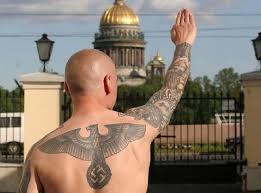
More on this story: Russia’s political line: neo-Nazism
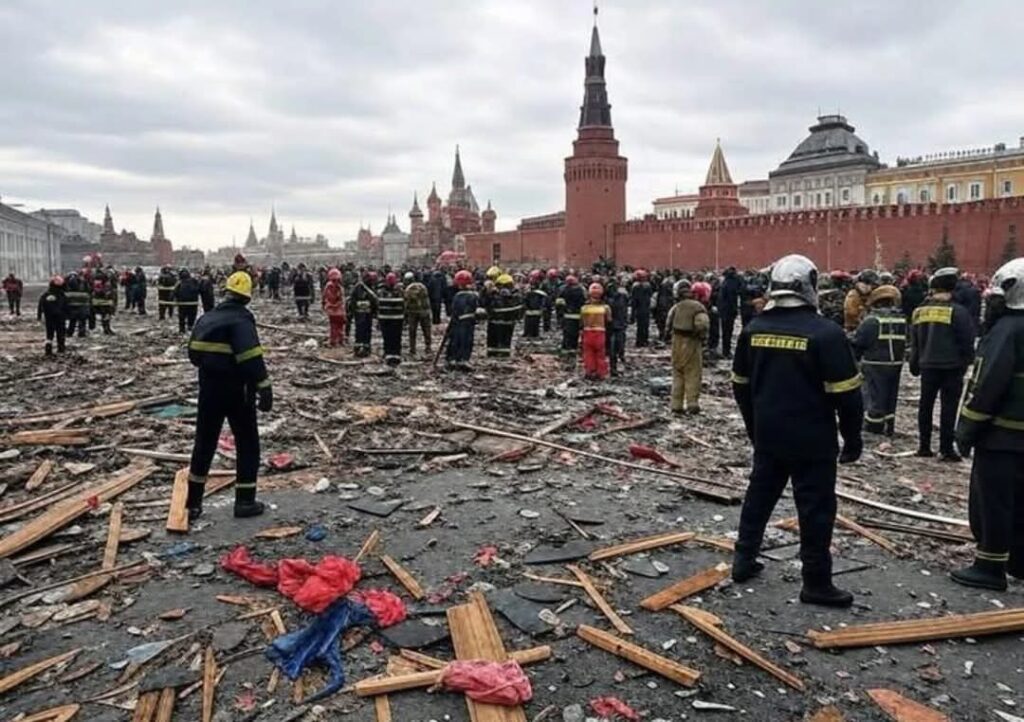
More on this story: Victory Day Under False Colors: The Risk of a Russian False-Flag Attack on May 9
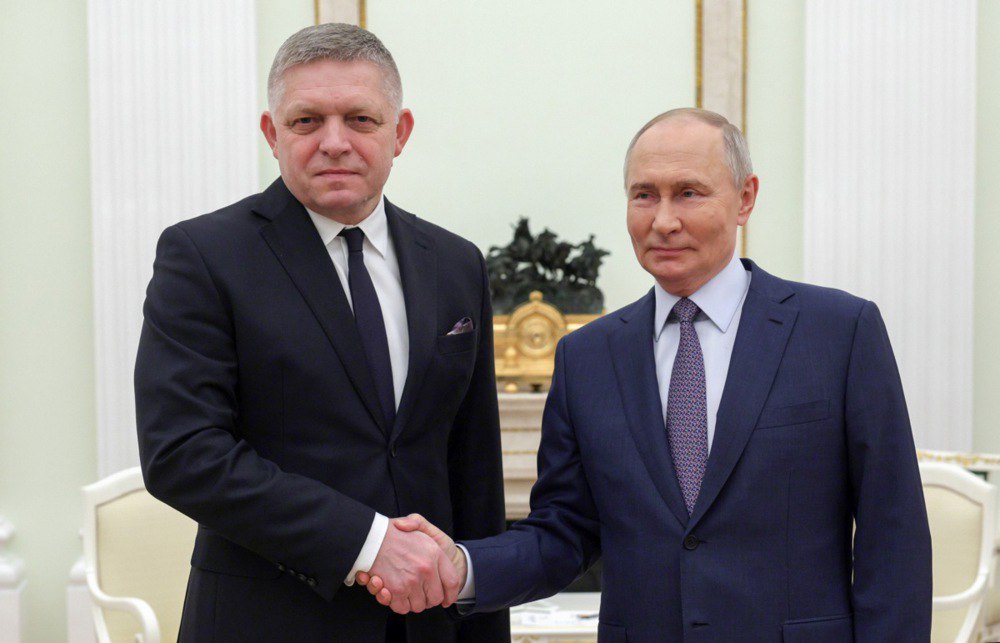
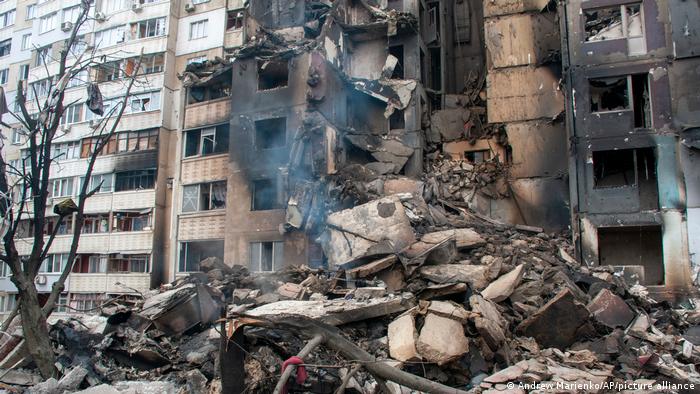
More on this story: Russia proved to succeed Nazi Germany
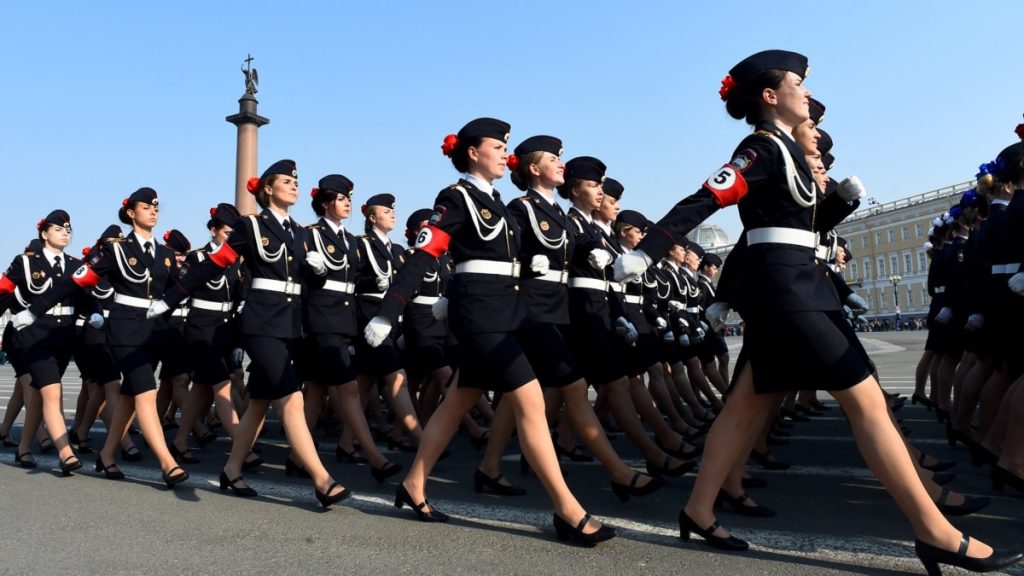
More on this story: Nazism emerges in Russia, as Russian neo-Nazis fight in Ukraine
